

This page started life as an article submitted to "Outdoor and Travel Photographer" magazine, but was not accepted.
Sweden is a land of understated beauty. It's appeal comes from gentle, unspoiled perfection, in both the landscape and the people. Centuries-old wooden houses, meadows overflowing with multicolored wild flowers, and an extensive but mostly uninhabited archipelago are just some of the delights awaiting the visitor.
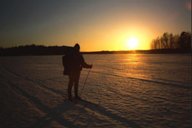 Summer is undoubtedly the time to visit, though if you find yourself in the
country in January or February there is another Sweden to be discovered during
the brief but spectacular winter days.
Summer is undoubtedly the time to visit, though if you find yourself in the
country in January or February there is another Sweden to be discovered during
the brief but spectacular winter days.
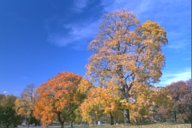 Expect to take home mostly landscapes, as one of the great things about the
country is that despite stretching 1000 miles from tip to toe, only 9 million
people live there, and a quarter of those are in the four big cities.
Expect to take home mostly landscapes, as one of the great things about the
country is that despite stretching 1000 miles from tip to toe, only 9 million
people live there, and a quarter of those are in the four big cities.
The Swedes share with most polar peoples the characteristics of reserve and independence, which can make them seem a little aloof and unfriendly at first. However, given an excuse to communicate (and being foreign and/or in need of help are excellent ones) they are kind, helpful and resourceful, and almost all speak excellent English.
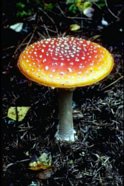 Particular equipment needs include macro equipment for unusual wildflowers
(I carry reversing rings and a lastolite reflector), and wideangle lenses for
inside woods and forests. Rain protection for you and your equipment is
essential, as the weather is not predictable. Expect daytime temperatures
between 15 and 25 degrees Centigrade from May to August. Use your polariser
sparingly, as the clear air means that polarization is preserved better than in
more humid, polluted climes, and this can lead to jet-black skies on film.
Particular equipment needs include macro equipment for unusual wildflowers
(I carry reversing rings and a lastolite reflector), and wideangle lenses for
inside woods and forests. Rain protection for you and your equipment is
essential, as the weather is not predictable. Expect daytime temperatures
between 15 and 25 degrees Centigrade from May to August. Use your polariser
sparingly, as the clear air means that polarization is preserved better than in
more humid, polluted climes, and this can lead to jet-black skies on film.
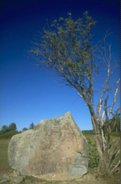 There are two obvious ways to travel within the country. The first is to
take public transport between hotels and guest houses, which can be expensive,
and you also miss the hidden Sweden where all the treasures are to be found.
So I prefer to rent a car and avail myself of the unique and enviable Swedish
law that allows anyone to camp on anyone else's land for "a reasonable period
of time" (a day or two) so long as they are not visible from a dwelling.
It is still of course courteous to ask permission if the owners are nearby,
and it is assumed that there will be no traces of your passing.
This makes for trouble-free and cheap travelling, and can be combined with the
occasional luxury of a visit to a youth hostel for a bath and company.
Another possibility, particularly if you are travelling with your family, is
to stay in the small guest cabins that many people have in their gardens and
rent out at reasonable rates in the summer by means of road-side signs saying
"Stuga". No booking is required, and if you are on a main road in the south
you will normally have no trouble finding one available.
There are two obvious ways to travel within the country. The first is to
take public transport between hotels and guest houses, which can be expensive,
and you also miss the hidden Sweden where all the treasures are to be found.
So I prefer to rent a car and avail myself of the unique and enviable Swedish
law that allows anyone to camp on anyone else's land for "a reasonable period
of time" (a day or two) so long as they are not visible from a dwelling.
It is still of course courteous to ask permission if the owners are nearby,
and it is assumed that there will be no traces of your passing.
This makes for trouble-free and cheap travelling, and can be combined with the
occasional luxury of a visit to a youth hostel for a bath and company.
Another possibility, particularly if you are travelling with your family, is
to stay in the small guest cabins that many people have in their gardens and
rent out at reasonable rates in the summer by means of road-side signs saying
"Stuga". No booking is required, and if you are on a main road in the south
you will normally have no trouble finding one available.
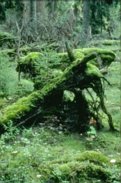 One of the great joys for the photographer is the extended magic hour -
because the sun sits so low in the sky it takes much longer to set than nearer
the equator, resulting in many more hours of good-quality light each day.
Indeed one never needs to stop shooting because of harsh overhead sun.
A more likely problem is overcast weather, which can be put to good use by
moving into the forests that cover 65% of the country, and use the softer light
to record the abundant wildflowers, grasses and funghi. Primitive plants like
clubmosses and horsetails also abound, which along with the dragonflies and
damselflies gives one an eerie impression of having slipped back in time
several millenia. When one further reflects that there may well be no human
life within twenty miles, it's hard not to believe that there are trolls and
spirits hiding behind the trees. Deer are very common, and you have a
reasonable chance of seeing moose on a short visit, but the brown bear and
lynx are likely to evade all but determined and expert trackers. Reindeer are
impossible to miss in the north, where they are farmed by the colorfully-
dressed and ethnically-distinct Sami, or Lapps.
One of the great joys for the photographer is the extended magic hour -
because the sun sits so low in the sky it takes much longer to set than nearer
the equator, resulting in many more hours of good-quality light each day.
Indeed one never needs to stop shooting because of harsh overhead sun.
A more likely problem is overcast weather, which can be put to good use by
moving into the forests that cover 65% of the country, and use the softer light
to record the abundant wildflowers, grasses and funghi. Primitive plants like
clubmosses and horsetails also abound, which along with the dragonflies and
damselflies gives one an eerie impression of having slipped back in time
several millenia. When one further reflects that there may well be no human
life within twenty miles, it's hard not to believe that there are trolls and
spirits hiding behind the trees. Deer are very common, and you have a
reasonable chance of seeing moose on a short visit, but the brown bear and
lynx are likely to evade all but determined and expert trackers. Reindeer are
impossible to miss in the north, where they are farmed by the colorfully-
dressed and ethnically-distinct Sami, or Lapps.
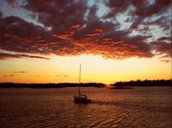 If you are more lucky with the weather, then you can head out on to the
water. Lakes cover 10% of Sweden's surface, and the Stockholm archipelago alone
comprises 24000 islands. Indeed it is often hard to define where the land
ends and the sea begins - Stockholm is somewhere in the gray zone, being built
on 14 islands connected by over 40 bridges. Photographic opportunities on the
water include traditional net fishermen, weekend sailors, and bird life
preserved by an extensive protection system. The most popular islands can be
reached by scheduled boat services, the rest by taxi boats or by rented
motorboats and even kayaks. The surrounding seas are usually quite calm.
If you are more lucky with the weather, then you can head out on to the
water. Lakes cover 10% of Sweden's surface, and the Stockholm archipelago alone
comprises 24000 islands. Indeed it is often hard to define where the land
ends and the sea begins - Stockholm is somewhere in the gray zone, being built
on 14 islands connected by over 40 bridges. Photographic opportunities on the
water include traditional net fishermen, weekend sailors, and bird life
preserved by an extensive protection system. The most popular islands can be
reached by scheduled boat services, the rest by taxi boats or by rented
motorboats and even kayaks. The surrounding seas are usually quite calm.
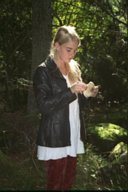 If you want to immortalize the Swedes themselves, then a festival is a good
opportunity to do so, particularly the midsummer celebrations held on the
first Friday after the summer solstice. All over the country, giant fertility
symbols are hand built from timber and fresh flowers during the day, and
singing and dancing goes on through the night that never really gets dark.
The people are photogenic, their natural nordic beauty being enhanced by the
healthy outdoor life that most people have. No-one minds being photographed if
normal respect and courtesy are shown.
If you want to immortalize the Swedes themselves, then a festival is a good
opportunity to do so, particularly the midsummer celebrations held on the
first Friday after the summer solstice. All over the country, giant fertility
symbols are hand built from timber and fresh flowers during the day, and
singing and dancing goes on through the night that never really gets dark.
The people are photogenic, their natural nordic beauty being enhanced by the
healthy outdoor life that most people have. No-one minds being photographed if
normal respect and courtesy are shown.
In conclusion, Sweden is a quiet, safe, beautiful country as yet unspoiled by tourism that should be included on any tour of Europe.